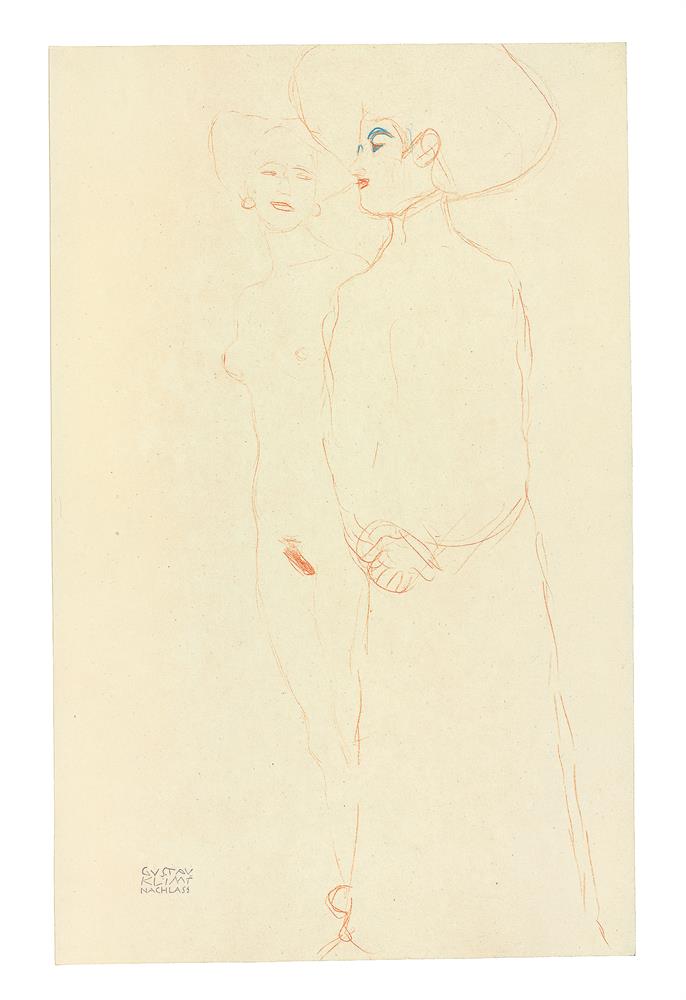
Vienna 1862 - 1918 Vienna
Undressed and dressed women standing to the left
Study to the painting Freundinnen IRed and blue crayon on paper
55.1 x 34.9 cm
Stamped lower left: GUSTAV / KLIMT / NACHLASS
Strobl WV no. 1926
Provenienz:
Private collection Kammersänger Professor Anton Dermota, Vienna
Gallery Daxer & Marschall, Munich
Ausstellungen:
Vienna, Albertina 1962, No. 126
Literatur:
Alice Strobl, Gustav Klimt. Die Zeichnungen. Vol. II: Die Zeichnungen 1904-1912, Salzburg 1989, ill. p. 225, WV no. 1926
Since Klimts earliest sketches for the paintings “Wasserschlangen I” and “Wasserschlangen II“, motifs of constellations of two, sometimes even three women pervaded his oevre; his models almost always remaining anonymous. He chose subjects like eroticism as well as fashionably dressed women, as is the case for the painting “Freundinnen I”, in which the frontal figure, a mature, seemingly introverted woman is contrasted by a youthful woman with bright red hair and a button nose. Typological contrasts are a common motif Klimt plays with which manifest in his preparations already as is shown here, through the example of a dressed and an undressed woman.
In the foreground, an aloof looking dressed woman with a hat is partly covering the nude woman in the back. In this sketch, the few drawn red lines, even a few blue ones, dominate the blank page. Their closeness exaggerates the contrast between the nude woman who is looking to the side and the stoic looking dressed woman. The accentuated pubic hair is a stark contrast to the clasped hands of the dressed woman. Lastly the way Klimt chose to sensually draw the curves, but used harsher lines for the other, effectively divides the both. As Alice Strobl comments, this combination of a dressed and an undressed woman already hints towards the painting that followed, “Freundinnen II”. 1
Once again, the medium of drawing acts as a field of experimentation for Klimt, in which he analyzes the psychological aspects of his subjects.
Marian Bisanz-Prakken
1 Alice Strobl, Gustav Klimt. The drawings 1904-1912, Bd. II, Salzburg 1982, p. 218
